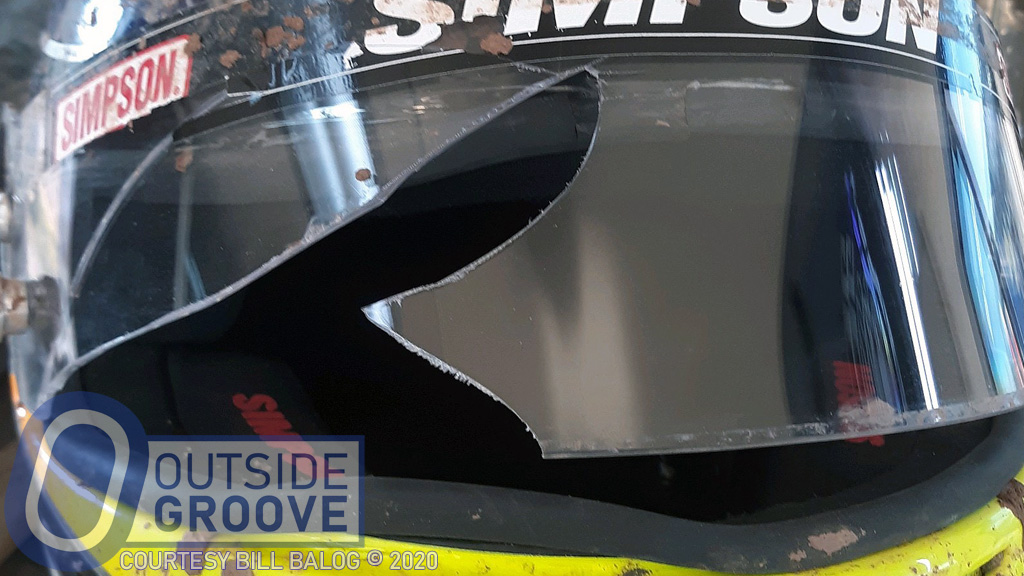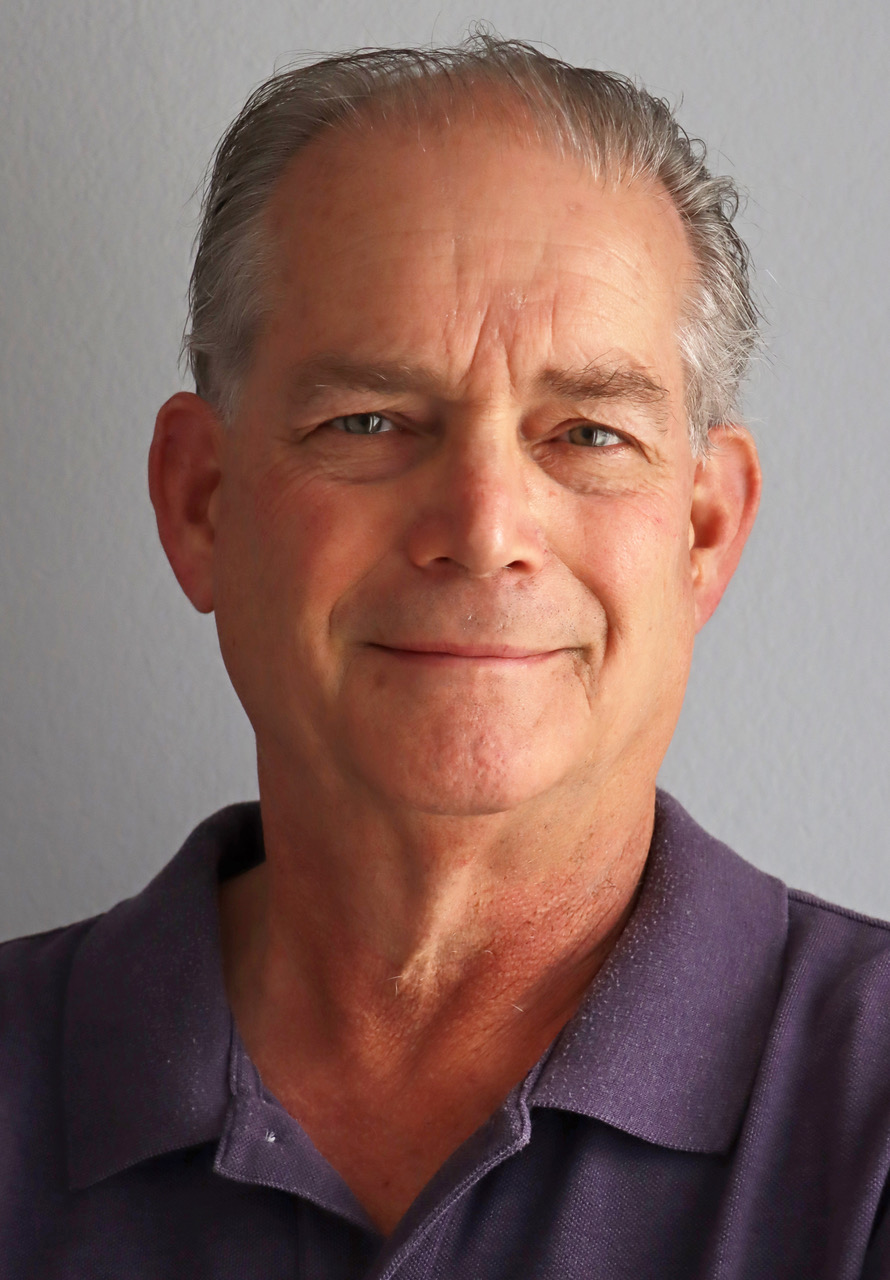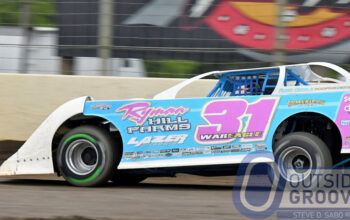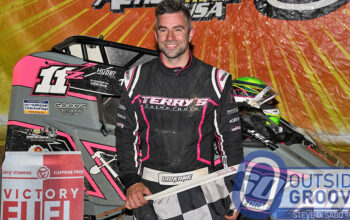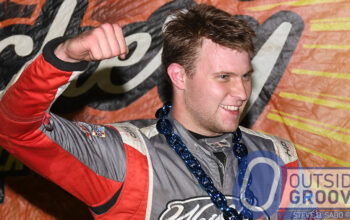Veteran sprint car driver Bill Balog has raced and won on a variety of dirt surfaces across the country — from the flat, gravelly Mitchell Raceway in Fairbanks, Alaska, to the banked, clay Beaver Dam Raceway in Wisconsin. It was at Beaver Dam earlier this month, during a World of Outlaws Sprint Car Series event, where he encountered a broken face shield, his first in 20 years of racing.
“I don’t know what hit me,” said Balog, 40, of Hartland, Wisconsin. “It could have been a part, a wrench, a rock.”
The incident occurred on the first lap of a World of Outlaws Sprint Car Series heat race — but Balog never slowed down. He had former NASCAR Cup Series driver Kasey Kahne challenging him for a transfer position into the feature. After holding Kahne off at the finish, he reached up to his shield.
“I noticed the tear offs had a big cut in them,” Balog said. “I ripped a couple off, and stuck my fingers in a hole. A piece of the face shield was gone.”
Balog found the missing piece of his face shield on the floor of his car.
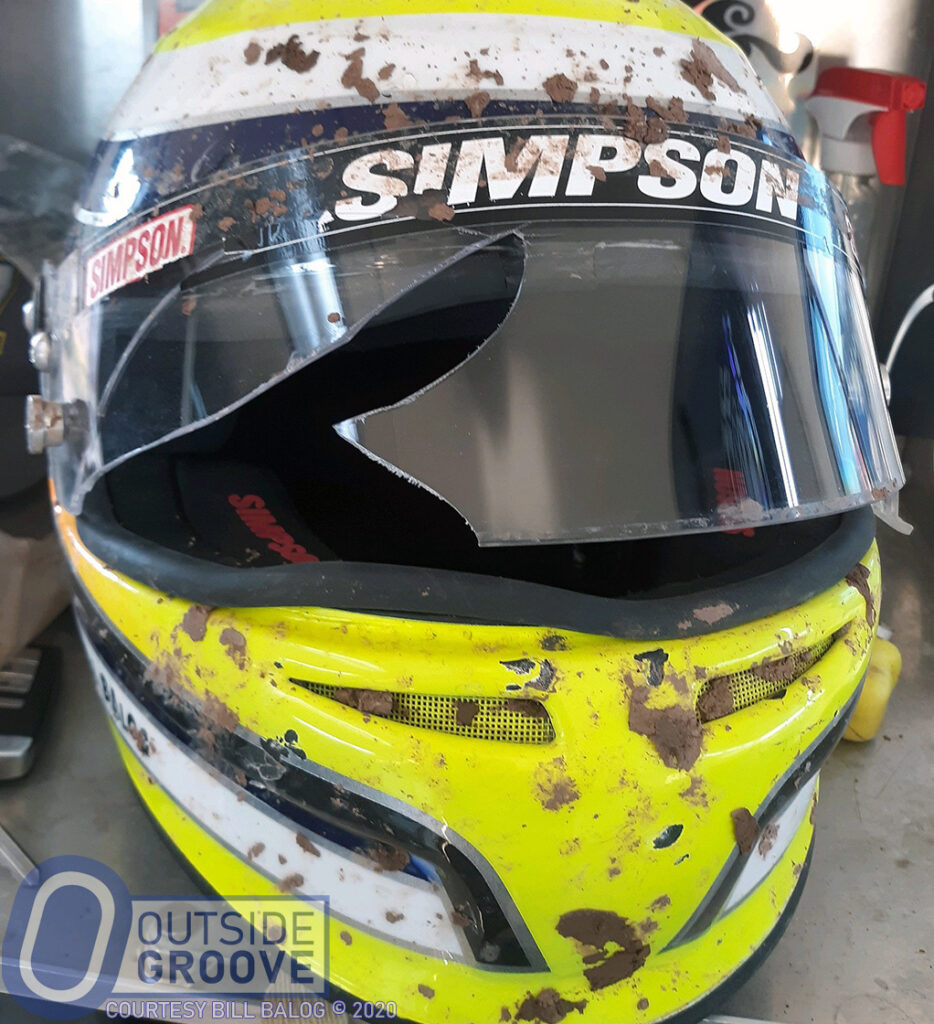
Balog, a loyal Simpson customer, was wearing a new Simpson Venator carbon fiber helmet. It carries Snell SA 2015 and FIA 8860 (the highest standard in FIA) certifications. In dirt racing, even the most protective helmet eventually succumbs to fatigue, especially after repeated hits from debris.
“No other form of racing does a helmet take more abuse than dirt oval racing,” said Simpson’s Aaron Zentgraf. “The helmet is exposed to everything on the racetrack.
“Drivers should inspect their face shield every time they install tear offs. Look for cracks, scratches, or a pitted surface. Check the shield lock hardware to see that it is tight and functioning properly. A spare shield is not that much money, $50 to $60, and is good to have on hand.”
Likewise, the most protective helmet on the market won’t protect a driver from all forms of debris. Zentgraf recommended that racers should consider using rock screens to help deflect debris from the driver.
“I never was a fan of rock screens, but when I got home that’s the first thing I wanted for my cars,” said Balog. “The incident spooked me. The thought of losing an eye is very scary. Since I race sprint cars for a living, [losing an eye] could end my career, not to mention being knocked unconscious and crashing.”
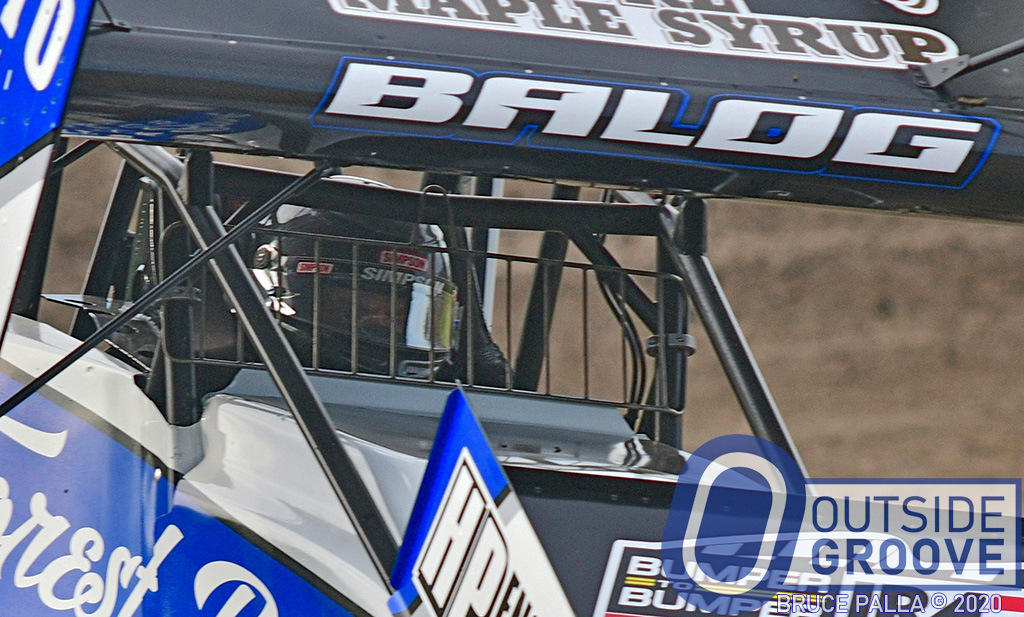
Source:
Simpson
New Braunfels, Texas
800-654-7223
Mike Adaskaveg has written hundreds of stories since the website’s inception. This year marks his 54th year of covering auto racing. Adaskaveg got his start working for track photographer Lloyd Burnham at Connecticut’s Stafford Motor Speedway in 1970. Since then, he’s been a columnist, writer, and photographer, in racing and in mainstream media, for several outlets, including the Journal Inquirer, Boston Herald, Stock Car Racing, and Speedway Illustrated. Among Adaskaveg’s many awards are the 1992 Eastern Motorsport Press Association (EMPA) Ace Lane Photographer of the Year and the 2019 National Motorsports Press Association (NMPA) George Cunningham Writer of the Year.

